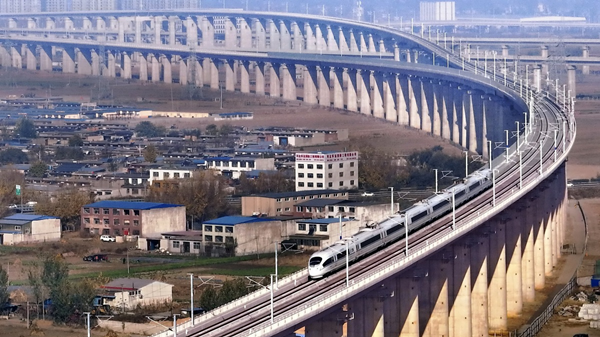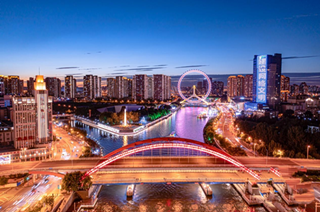Beijing, Tianjin and Hebei reap fruits of deeper cooperation

The Beijing-Tianjin-Hebei integrated development region has deepened cooperation in many fields including transportation, ecology and industry over the past 10 years, achieving significant progress and establishing a mutually beneficial growth pattern, a senior Beijing official said on Thursday.
"The combined economic output of the three regions has reached 10.4 trillion yuan ($1.45 trillion), 1.9 times that of 2013, indicating a continuous enhancement of the overall regional strength," Liu Bozheng, deputy director of the Beijing office overseeing the integration of the Beijing-Tianjin-Hebei region, told a news conference on Thursday.
"The modernized capital metropolitan area is advancing toward a world-class city cluster."
Over the past decade, the three regions have conducted collaborative innovation and industrial cooperation targeting high-quality regional development.
"Beijing has played a pivotal role in driving regional development, transitioning from industrial transfer to collaborative industrial chain development, thereby expanding industrial output together with the other two regions," Liu said.
By the end of December, enterprises in Beijing's Zhongguancun area had established more than 10,000 branches in Tianjin and Hebei province. Beijing's investment in enterprises in the two regions has totaled 2.3 trillion yuan, according to the Beijing Municipal Science and Technology Commission.
"In the future, we will focus on science and technology achievement transformation in the region and accelerate joint innovation among the scientific institutions and companies from the three places to further promote integrated industrial growth," said Zhang Zhisong, a senior official from the commission.
The integrated transportation network in the region has achieved breakthroughs in the past decade, realizing a comprehensive transportation network.
According to official data, railways in the Beijing-Tianjin-Hebei region now extend for more than 11,000 kilometers, up more than 30 percent since 2013, while expressways run for nearly 11,000 km, more than 40 percent further than in 2013.
Beijing Daxing International Airport, on the border of Beijing and Langfang, Hebei, has significantly enhanced international competitiveness, and a well-coordinated and efficient Tianjin-Hebei port cluster has rapidly risen, with cargo throughput exceeding 1.9 billion metric tons.
It takes less than half an hour to travel between Beijing and Tianjin, and travel between other major cities in the region can be completed in 1 to 1.5 hours.
Three new subway lines or sections totaling about 45.3 km will begin initial operations in Beijing this year, extending the capital's urban rail transit network to over 880 km, according to the Beijing Major Projects Construction Headquarters Office.
"Beijing's urban rail construction will adhere to the planning of the city's transportation network and underground space, contributing to the coordinated development of the Beijing-Tianjin-Hebei region and the high-quality development of the capital's economy," said Yang Liming, the official in charge of rail construction at the office.
Over the past decade, the quality of the environment in the region has been significantly improved. By the end of last year, the annual average concentration of PM2.5 fine particulate matter in the region had fallen by around 60 percent compared to 2013, according to the Beijing Municipal Ecology and Environment Bureau.
In 2023, Beijing saw 95 more days with excellent air quality than in 2013, Tianjin 87 more and Hebei 121 more, it added.

Copyright © Tianjin Municipal Government.
All rights reserved. Presented by China Daily.
京ICP备13028878号-35



